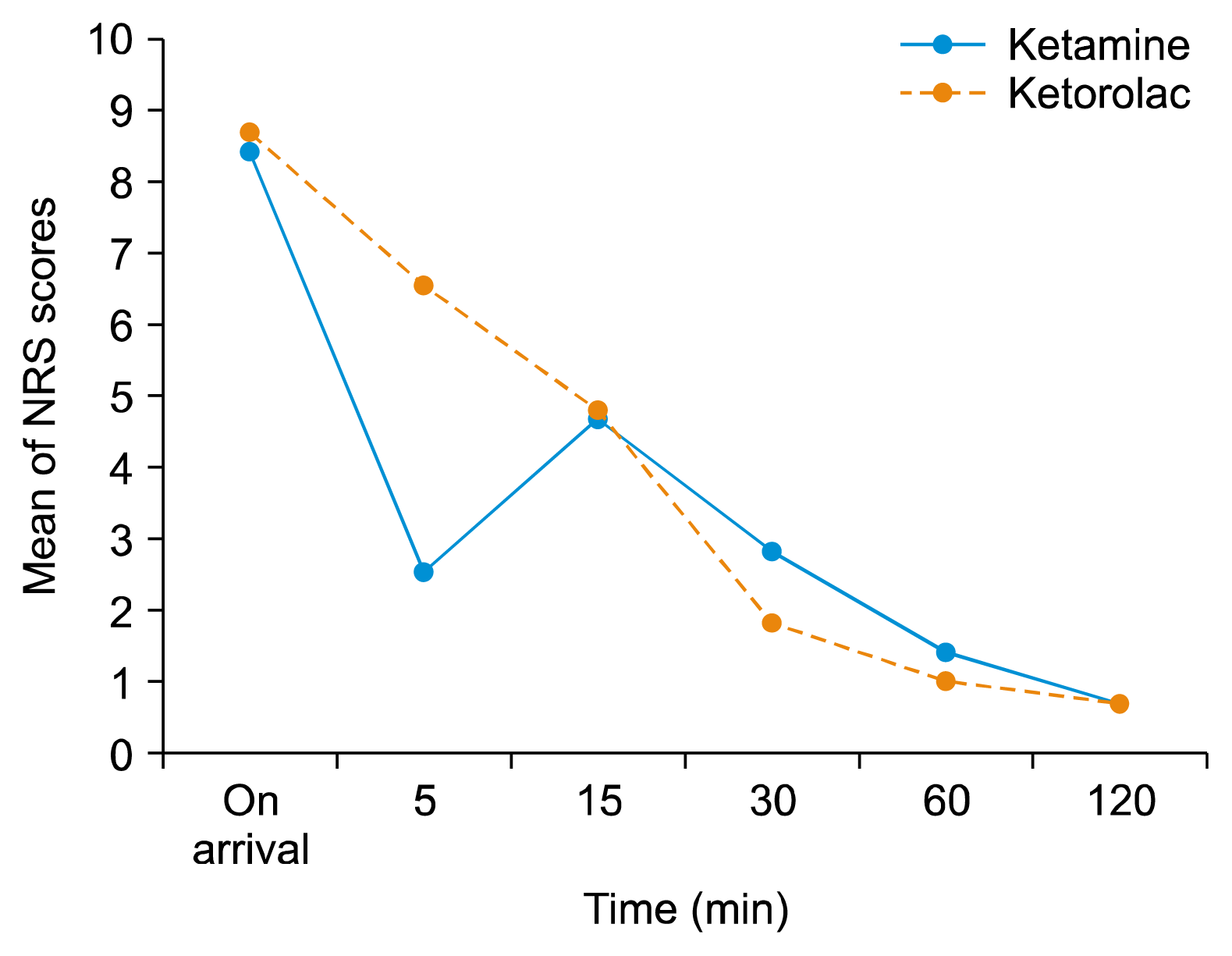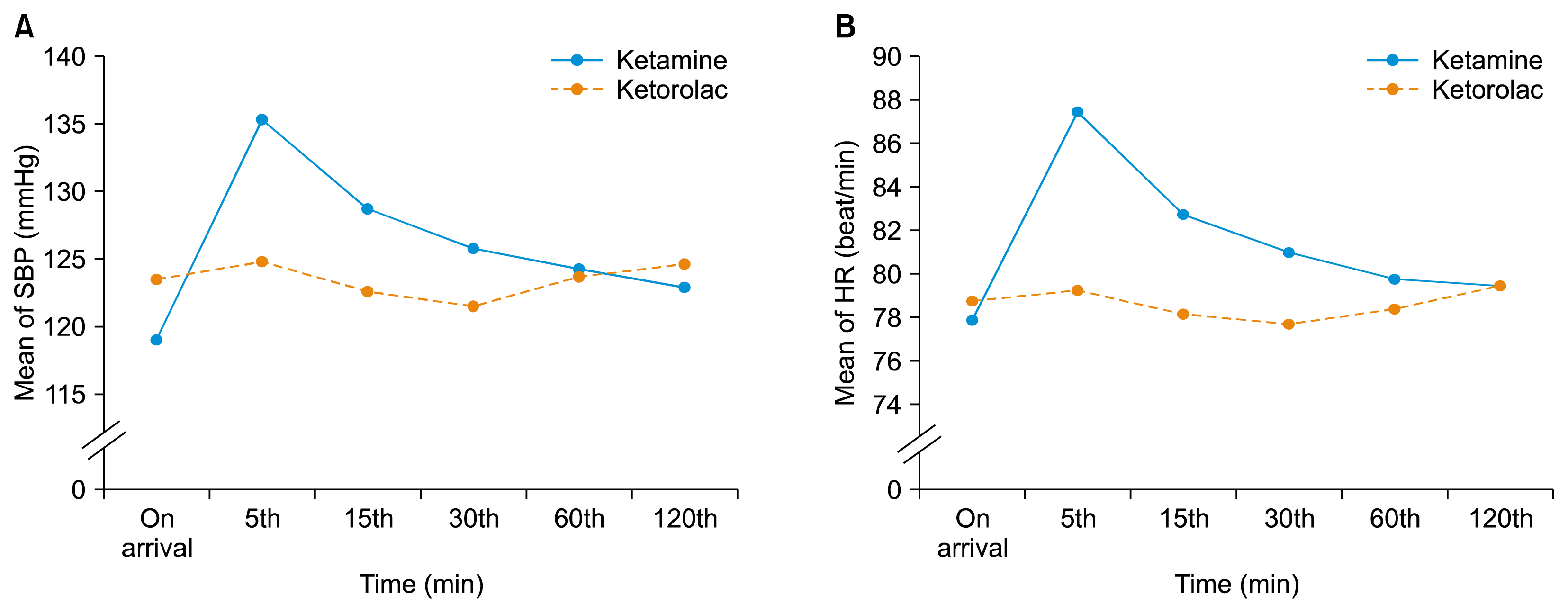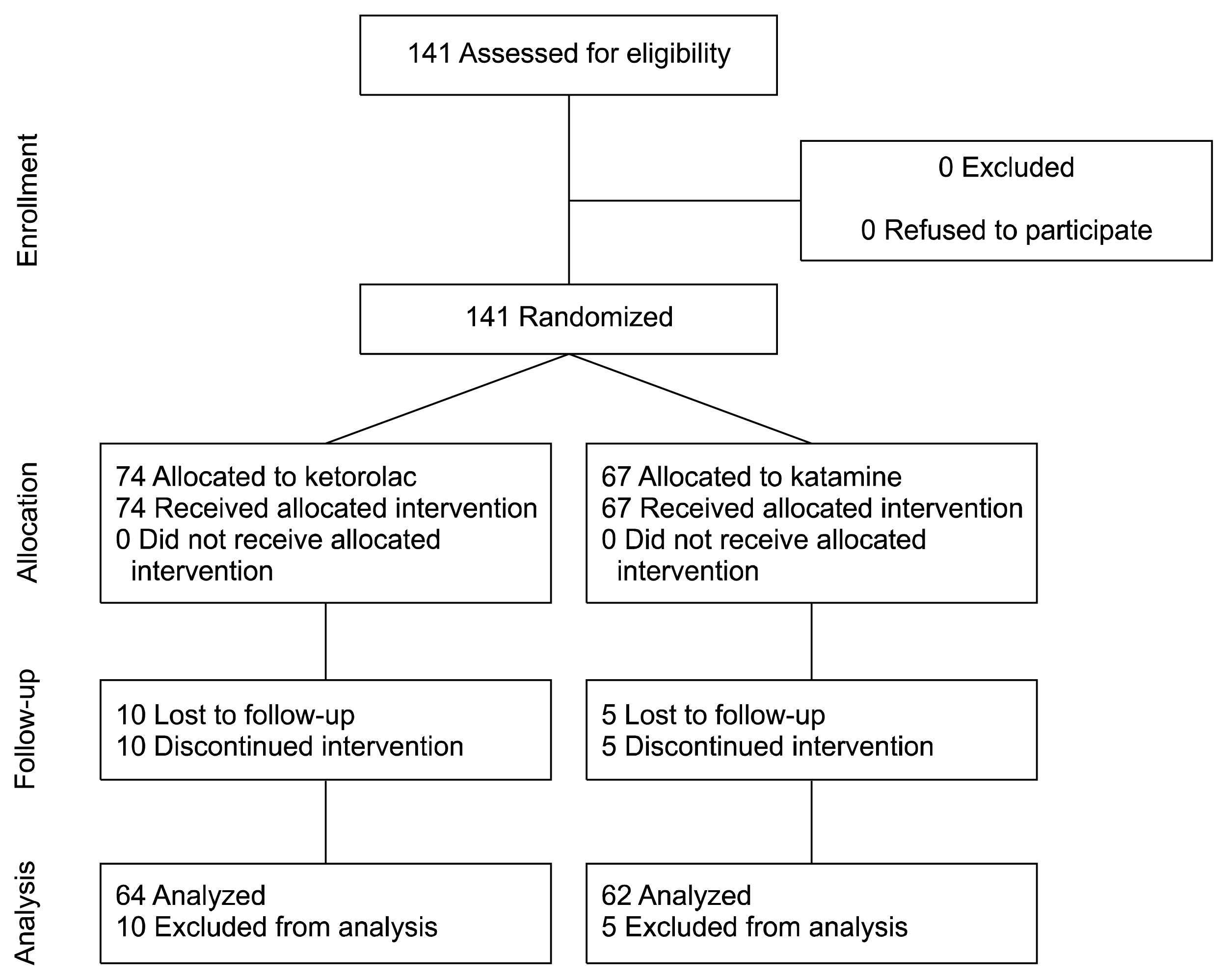1. Teichman JM. Clinical practice: acute renal colic from ureteral calculus. N Engl J Med. 2004; 350:684–93. DOI:
10.1056/NEJMcp030813. PMID:
14960744.
2. Romero V, Akpinar H, Assimos DG. Kidney stones: a global picture of prevalence, incidence, and associated risk factors. Rev Urol. 2010; 12:e86–96. PMID:
20811557. PMCID:
2931286.
3. Brown J. Diagnostic and treatment patterns for renal colic in US emergency departments. Int Urol Nephrol. 2006; 38:87–92. DOI:
10.1007/s11255-005-3622-6. PMID:
16502058.

5. Engeler DS, Schmid S, Schmid HP. The ideal analgesic treatment for acute renal colic: theory and practice. Scand J Urol Nephrol. 2008; 42:137–42. DOI:
10.1080/00365590701673716. PMID:
17899475.
6. Bounes V, Vallé B, Concina F, Lauque D, Ducassé JL, Edlow JA. Treatment of acute renal colic in Us and French EDs: simulated cases and real cases in acute pain management. Am J Emerg Med. 2016; 34:1955–8. DOI:
10.1016/j.ajem.2016.06.107. PMID:
27431741.

7. Shin MT, Juho YC, Meng E, Sun GH, Cha TL, Wu ST, et al. Pain severity in renal colic: a retrospective evaluation of initial visits in patients at a medical center. Int Surg J. 2016; 3:480–3.

8. Janati M, Kariman H, Memary E, Davarinezhad-Moghadam E, Arhami-Dolatabadi A. Educational intervention effect on pain management quality in emergency department; a clinical audit. Adv J Emerg Med. 2018; 2:e16.
12. Benyamin R, Trescot AM, Datta S, Buenaventura R, Adlaka R, Sehgal N, et al. Opioid complications and side effects. Pain Physician. 2008; 11(2 Suppl):S105–20. PMID:
18443635.

13. Baratloo A, Amiri M, Forouzanfar MM, Hasani S, Fouda S, Negida A. Efficacy measurement of ketorolac in reducing the severity of headache. J Emerg Pract Trauma. 2016; 2:21–4. DOI:
10.15171/jept.2015.18.

14. Alimohammadi H, Baratloo A, Abdalvand A, Rouhipour A, Safari S. Effects of pain relief on arterial blood o2 saturation. Trauma Mon. 2014; 19:e14034. DOI:
10.5812/traumamon.14034. PMID:
24719825. PMCID:
3955924.

15. Edwards JM, Sloan EP, Eder S, Chan S. Renal colic patient pain management in the emergency department. Ann Emerg Med. 2004; 44(4 Suppl):S58.

16. Abdolrazaghnejad A, Banaie M, Tavakoli N, Safdari M, Rajabpour-Sanati A. Pain management in the emergency department: a review article on options and methods. Adv J Emerg Med. 2018; 2:e45.
17. Tramèr MR, Williams JE, Carroll D, Wiffen PJ, Moore RA, McQuay HJ. Comparing analgesic efficacy of non-steroidal anti-inflammatory drugs given by different routes in acute and chronic pain: a qualitative systematic review. Acta Anaesthesiol Scand. 1998; 42:71–9. DOI:
10.1111/j.1399-6576.1998.tb05083.x. PMID:
9527748.

18. Manthey DE, Nicks BA. Urologic stone disease. Tintinalli’s emergency medicine: a comprehensive study guide. 8th ed. Tintinalli JE, Stapczynski JS, Ma OJ, Yealy DM, Meckler GD, Cline DM, editors. New York: McGraw-Hill;2016. p. 609–13.
19. Jackson J, Farhi J, Wheeler K, Rueb G, Thom C, Schenkman N. Retrospective review of acute renal colic management in the emergency department and review of guidelines. Urol Pract. 2018; 5:113–9. DOI:
10.1016/j.urpr.2017.02.007.

20. Arhami Dolatabadi A, Memary E, Kariman H, Nasiri Gigloo K, Baratloo A. Intranasal desmopressin compared with intravenous ketorolac for pain management of patients with renal colic referring to the emergency department: a randomized clinical trial. Anesth Pain Med. 2017; 7:e43595. DOI:
10.5812/aapm.43595. PMID:
28824859. PMCID:
5556593.

21. Holdgate A, Pollock T. Systematic review of the relative efficacy of non-steroidal anti-inflammatory drugs and opioids in the treatment of acute renal colic. BMJ. 2004; 328:1401. DOI:
10.1136/bmj.38119.581991.55. PMID:
15178585. PMCID:
421776.

25. Mohammadshahi A, Abdolrazaghnejad A, Nikzamir H, Safaie A. Intranasal ketamine administration for narcotic dose decrement in patients suffering from acute limb trauma in emergency department: a double-blind randomized placebo-controlled trial. Adv J Emerg Med. 2018; 2:e30.
27. Weisz K, Bajaj L, Deakyne SJ, Brou L, Brent A, Wathen J, et al. Adverse events during a randomized trial of ketamine versus co-administration of ketamine and propofol for procedural sedation in a pediatric emergency department. J Emerg Med. 2017; 53:1–9. DOI:
10.1016/j.jemermed.2017.03.024. PMID:
28433211.

28. Treston G, Bell A, Cardwell R, Fincher G, Chand D, Cashion G. What is the nature of the emergence phenomenon when using intravenous or intramuscular ketamine for paediatric procedural sedation? Emerg Med Australas. 2009; 21:315–22. DOI:
10.1111/j.1742-6723.2009.01203.x. PMID:
19682018.

29. Huge V, Lauchart M, Magerl W, Schelling G, Beyer A, Thieme D, et al. Effects of low-dose intranasal (S)-ketamine in patients with neuropathic pain. Eur J Pain. 2010; 14:387–94. DOI:
10.1016/j.ejpain.2009.08.002. PMID:
19733106.

30. Bilgen S, Köner O, Türe H, Menda F, Fiçicioğlu C, Aykaç B. Effect of three different doses of ketamine prior to general anaesthesia on postoperative pain following Caesarean delivery: a prospective randomized study. Minerva Anestesiol. 2012; 78:442–9. PMID:
22240615.
32. Sadove MS, Shulman M, Hatano S, Fevold N. Analgesic effects of ketamine administered in subdissociative doses. Anesth Analg. 1971; 50:452–7. DOI:
10.1213/00000539-197105000-00037. PMID:
5103784.

34. Galinski M, Dolveck F, Combes X, Limoges V, Smaïl N, Pommier V, et al. Management of severe acute pain in emergency settings: ketamine reduces morphine consumption. Am J Emerg Med. 2007; 25:385–90. DOI:
10.1016/j.ajem.2006.11.016. PMID:
17499654.

35. Bespalov AY, Zvartau EE, Beardsley PM. Opioid-NMDA receptor interactions may clarify conditioned (associative) components of opioid analgesic tolerance. Neurosci Biobehav Rev. 2001; 25:343–53. DOI:
10.1016/S0149-7634(01)00018-5. PMID:
11445139.

36. Farnia MR, Jalali A, Vahidi E, Momeni M, Seyedhosseini J, Saeedi M. Comparison of intranasal ketamine versus IV morphine in reducing pain in patients with renal colic. Am J Emerg Med. 2017; 35:434–7. DOI:
10.1016/j.ajem.2016.11.043. PMID:
27931762.

37. Vosoughin M, Mohammadi S, Dabbagh A. Intravenous ketamine compared with diclofenac suppository in suppressing acute postoperative pain in women undergoing gynecologic laparoscopy. J Anesth. 2012; 26:732–7. DOI:
10.1007/s00540-012-1399-1. PMID:
22576074.

38. Assouline B, Tramèr MR, Kreienbühl L, Elia N. Benefit and harm of adding ketamine to an opioid in a patient-controlled analgesia device for the control of postoperative pain: systematic review and meta-analyses of randomized controlled trials with trial sequential analyses. Pain. 2016; 157:2854–64. DOI:
10.1097/j.pain.0000000000000705. PMID:
27780181.

41. Andolfatto G, Willman E, Joo D, Miller P, Wong WB, Koehn M, et al. Intranasal ketamine for analgesia in the emergency department: a prospective observational series. Acad Emerg Med. 2013; 20:1050–4. DOI:
10.1111/acem.12229. PMID:
24127709.

42. Wedmore IS, Johnson T, Czarnik J, Hendrix S. Pain management in the wilderness and operational setting. Emerg Med Clin North Am. 2005; 23:585–601. xi–xii. DOI:
10.1016/j.emc.2004.12.017. PMID:
15829399.

43. Allen CA, Ivester JR Jr. Ketamine for pain management-side effects & potential adverse events. Pain Manag Nurs. 2017; 18:372–7. DOI:
10.1016/j.pmn.2017.05.006. PMID:
28743507.
44. Ghate G, Clark E, Vaillancourt C. Systematic review of the use of low-dose ketamine for analgesia in the emergency department. CJEM. 2018; 20:36–45. DOI:
10.1017/cem.2017.48. PMID:
28655364.







 PDF
PDF Citation
Citation Print
Print



 XML Download
XML Download